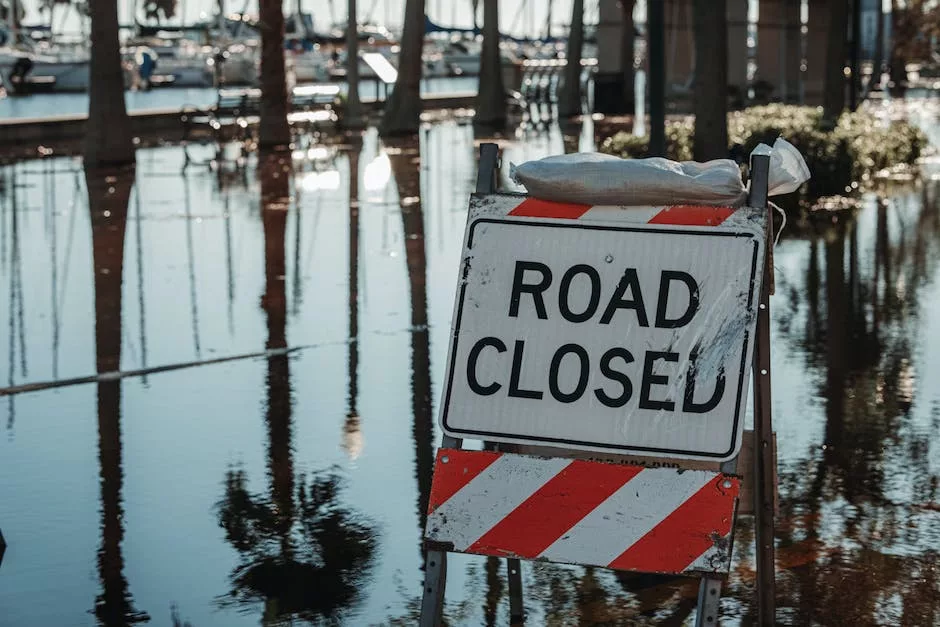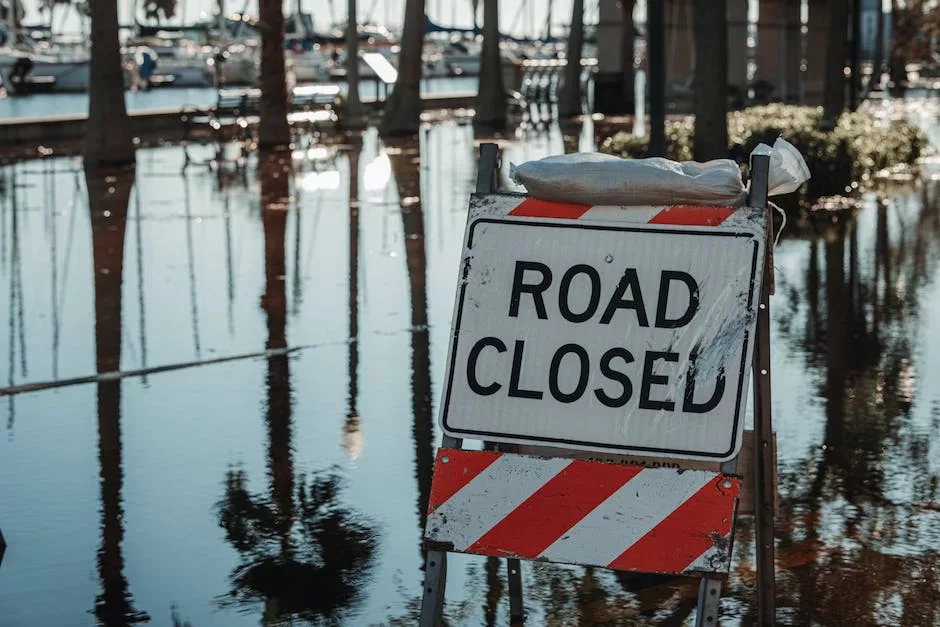Introduction
Scientists have expressed concerns about the potential impact of Hurricane Ian on the local ecology over time. As hurricanes can cause significant damage to ecosystems, researchers are closely monitoring the aftermath of the storm to assess its long-term effects on the environment. The destruction of habitats, loss of biodiversity, and changes in water quality are just a few of the potential consequences that could have far-reaching implications for the region’s ecology.
The Effects of Hurricane Ian on Local Wildlife Populations

Hurricane Ian has come and gone, leaving behind a trail of destruction in its wake. While the immediate impact of the hurricane on human lives and property is well-documented, scientists are now expressing concerns about the long-term impact of the hurricane on local ecology.
One of the biggest concerns is the impact of Hurricane Ian on local wildlife populations. Hurricanes can have a devastating impact on wildlife, destroying habitats and disrupting food chains. In the aftermath of Hurricane Ian, scientists are already seeing signs of stress in local wildlife populations.
For example, many bird species have been displaced from their habitats, and are struggling to find food and shelter. This can lead to a decline in their populations over time, as they struggle to adapt to their new surroundings.
Similarly, many fish species have been affected by the hurricane, as their habitats have been destroyed or disrupted. This can lead to a decline in their populations, as they struggle to find food and shelter in the aftermath of the hurricane.
But it’s not just the immediate impact of Hurricane Ian that scientists are concerned about. They are also worried about the long-term impact of the hurricane on local ecology.
For example, hurricanes can have a significant impact on soil quality, as they can wash away nutrients and disrupt the delicate balance of microorganisms in the soil. This can have a knock-on effect on plant growth, which can in turn affect the entire food chain.
In addition, hurricanes can also have a significant impact on water quality, as they can wash pollutants into rivers and streams. This can have a devastating impact on aquatic life, as well as on human health.
So what can be done to mitigate the impact of Hurricane Ian on local ecology? One solution is to focus on habitat restoration and conservation efforts. By restoring habitats that have been destroyed by the hurricane, we can help to ensure that local wildlife populations have the resources they need to survive and thrive.
Another solution is to focus on sustainable development practices, which can help to reduce the impact of future hurricanes on local ecology. By building homes and infrastructure in a way that is less vulnerable to hurricanes, we can help to protect local wildlife populations and their habitats.
Of course, these solutions are easier said than done. But if we want to protect our local ecology from the long-term impact of Hurricane Ian, we need to start taking action now.
In the meantime, scientists will continue to monitor the impact of Hurricane Ian on local wildlife populations, and will work to develop strategies to mitigate its impact over time. It’s a daunting task, but one that is essential if we want to protect the delicate balance of our local ecology.
Potential Long-Term Damage to Ecosystems from Hurricane Ian
Hurricane Ian has come and gone, leaving behind a trail of destruction in its wake. While the immediate impact of the hurricane is evident, scientists are now expressing concerns about the potential long-term damage to local ecosystems.
One of the main concerns is the impact of the hurricane on the local flora and fauna. The strong winds and heavy rains can uproot trees, destroy habitats, and disrupt the delicate balance of the ecosystem. This can have a ripple effect on the entire food chain, from insects to birds to larger animals.
But it’s not just the immediate impact that scientists are worried about. They are also concerned about the long-term effects of the hurricane on the environment. For example, the loss of trees and other vegetation can lead to soil erosion, which can in turn lead to water pollution and other environmental problems.
Another concern is the impact of the hurricane on the local economy. Many communities rely on tourism and other industries that are directly or indirectly linked to the environment. If the hurricane has a significant impact on the local ecology, it could have a ripple effect on the economy as well.
So what can be done to mitigate the potential long-term damage from Hurricane Ian? One solution is to invest in sustainable practices that can help to protect the environment and promote economic growth. This could include things like renewable energy, eco-tourism, and sustainable agriculture.
Another solution is to invest in research and development that can help to better understand the impact of hurricanes on local ecosystems. This could include things like studying the behavior of animals and plants in the aftermath of a hurricane, as well as developing new technologies that can help to mitigate the impact of future hurricanes.
Of course, there are no easy solutions to the complex problems posed by Hurricane Ian and other natural disasters. But by working together and investing in sustainable practices and research, we can help to protect our environment and promote economic growth for generations to come.
In the meantime, it’s important to remember that hurricanes are a natural part of our world, and that we need to be prepared for them. This means having emergency plans in place, stocking up on supplies, and staying informed about the latest weather forecasts and warnings.
So while Hurricane Ian may have caused some short-term damage, it’s up to us to ensure that the long-term impact is minimized. By working together and investing in sustainable practices and research, we can help to protect our environment and promote economic growth for generations to come.
Mitigation Strategies for Minimizing Hurricane Ian’s Impact on Local Ecology
Hurricane Ian is coming, and scientists are worried about its impact on the local ecology. As a result, they have come up with some mitigation strategies to minimize the damage that this hurricane could cause.
Firstly, scientists recommend that people should avoid using pesticides and fertilizers before the hurricane hits. This is because these chemicals can be washed away by the rain and end up in the local waterways, causing harm to aquatic life. Instead, people should use natural methods to control pests and fertilize their gardens.
Secondly, scientists suggest that people should avoid using plastic bags and other single-use plastics. This is because these items can easily be blown away by the wind and end up in the ocean, where they can harm marine life. Instead, people should use reusable bags and containers to reduce their plastic waste.
Thirdly, scientists recommend that people should avoid driving during the hurricane. This is because the rain can wash away oil and other pollutants from the roads, which can end up in the local waterways. Instead, people should stay at home and wait for the storm to pass.
Fourthly, scientists suggest that people should avoid using generators during the hurricane. This is because generators emit carbon monoxide, which can be harmful to both humans and animals. Instead, people should use alternative sources of power, such as solar panels or wind turbines.
Finally, scientists recommend that people should avoid littering during the hurricane. This is because litter can be blown away by the wind and end up in the ocean, where it can harm marine life. Instead, people should dispose of their trash properly and recycle as much as possible.
In conclusion, Hurricane Ian is a serious threat to the local ecology, but there are things that people can do to minimize its impact. By following these mitigation strategies, we can help protect the environment and ensure that our local ecosystems remain healthy and vibrant for years to come. So, let’s all do our part and prepare for Hurricane Ian in a responsible and sustainable way.
Conclusion
Scientists are expressing concerns about Hurricane Ian’s impact on local ecology over time.



